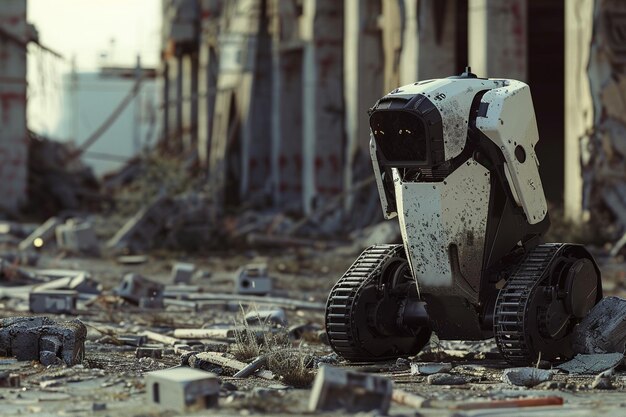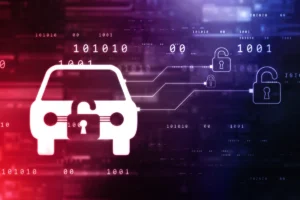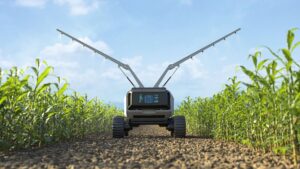Advanced Robotics in Disaster Response

The use of advanced robotics in disaster response has transformed the way rescue missions are conducted in the face of natural and man-made calamities. These robots, equipped with cutting-edge technologies such as artificial intelligence, sensors, and autonomous navigation, offer a range of capabilities that significantly enhance the efficiency and safety of disaster response efforts. Whether deployed in the aftermath of earthquakes, floods, or industrial accidents, robotics is playing an increasingly vital role in saving lives and minimizing damage.
One of the most significant advantages of using robots in disaster response is their ability to operate in hazardous environments that are too dangerous or inaccessible for human rescuers. In situations like nuclear disasters, chemical spills, or areas prone to aftershocks, sending humans into the field can be life-threatening. Robots, on the other hand, are impervious to many of these dangers. They can navigate through toxic environments, withstand high levels of radiation, and function in extreme heat or cold. By doing so, they reduce the risk to human responders while extending the operational reach of search and rescue missions.
Search and rescue operations, particularly in the aftermath of events like earthquakes or building collapses, often require specialized equipment to locate survivors trapped under debris. Traditionally, this has been a time-consuming process involving manual digging and scanning with basic tools. However, advanced robots equipped with thermal imaging cameras, radar, and sonar systems can scan through debris to detect human presence quickly. These robots can move into confined spaces and send real-time data to rescue teams, providing critical information on the location of survivors and allowing teams to prioritize their efforts accordingly.
Unmanned aerial vehicles (UAVs), commonly known as drones, are another type of robot that has become indispensable in disaster response. Drones can be deployed within minutes to survey disaster zones, providing real-time aerial footage that helps emergency responders assess the situation and plan their response more effectively. Equipped with high-resolution cameras and sensors, drones can capture detailed images and create 3D maps of affected areas, helping authorities determine the extent of the damage, locate survivors, and identify safe routes for evacuation. In addition to aerial surveillance, drones are also being used to deliver essential supplies like food, water, and medical aid to areas that are difficult to reach by land.
Ground-based robots are equally critical in disaster scenarios. Autonomous vehicles equipped with sensors, cameras, and robotic arms can be deployed to clear debris, access hard-to-reach locations, or transport supplies. These robots can carry out tasks such as lifting heavy objects or drilling through rubble, which are often beyond human capabilities. For instance, robots with robotic arms can remove obstructions, allowing emergency personnel to access areas where survivors may be trapped. Furthermore, robots that are equipped with AI-driven algorithms can make autonomous decisions, adjusting their path and mission based on real-time data.
In underwater rescue missions, robots play a crucial role as well. Submersible robots, also known as underwater drones or remotely operated vehicles (ROVs), are designed to navigate deep waters to search for missing persons, investigate shipwrecks, or repair damaged infrastructure. These ROVs can operate at depths and in conditions where human divers cannot, providing real-time video feeds and the ability to interact with underwater objects using robotic arms. This technology is essential during floods, tsunamis, and offshore industrial disasters, where traditional rescue methods fall short.
Communication is often one of the first systems to fail during a disaster, particularly in remote or heavily affected areas. Without reliable communication, coordinating response efforts becomes challenging, delaying rescue operations. Advanced robotics, equipped with communication relays, can help establish temporary networks in disaster-stricken areas. Drones can fly over disaster zones, creating mobile communication networks that allow first responders to stay connected and share information in real-time. This capability is particularly useful in areas where conventional infrastructure has been damaged or destroyed.
While advanced robotics has significantly improved disaster response, the technology is not without its challenges. The unpredictable nature of disasters means that robots must be highly adaptable and resilient to changing conditions. Additionally, ensuring that robots have sufficient power to operate over extended periods in disaster zones remains a logistical hurdle, particularly in remote or resource-scarce areas. Furthermore, developing intuitive control systems that allow human operators to guide and interact with robots efficiently is critical for ensuring the success of robotic deployment in disaster scenarios.
Despite these challenges, the future of robotics in disaster response looks promising. Advances in AI, machine learning, and autonomous navigation are driving the development of more intelligent and capable robots that can make decisions in real-time and perform complex tasks with minimal human intervention. Moreover, innovations in battery technology and energy management are extending the operational capabilities of robots, allowing them to remain active for longer periods during rescue missions. These advancements hold the potential to revolutionize how we respond to disasters, making rescue operations faster, safer, and more effective.
As the frequency and severity of natural disasters increase due to climate change, the role of robotics in disaster response will only become more critical. By augmenting human efforts with advanced technology, robots can help save more lives, reduce the risk to first responders, and ensure that aid reaches those who need it most, even in the most challenging conditions.



